Northwest Arkansas


INTRODUCTION
BACKGROUND
NORTHWEST ARKANSAS NEEDS ASSESSMENT
CURRENT EFFORTS
IDENTIFIED GAPS
CONCLUSION
APPENDICES
Special
Introduction
The purpose of this landscape analysis is to better understand the needs, resources, and opportunities impacting the experiences and futures of transition-aged youth1 (TAY) in and around the foster care system in Northwest Arkansas. To strategically improve support for these young people, a deeper level of understanding is critical to building upon current local resources and intentionally resourcing identified gaps.
This report summarizes numerous external data sources and more than 40 source interviews over a seven month period with Northwest Arkansas stakeholders, including local and state Division of Children and Family Services (DCFS) leaders and staff, nonprofits, behavioral health providers, local government officials, law enforcement, and several interviews with local youth. While not exhaustive, the research offers a robust resource to inform agency decision-making. Immerse Arkansas will use these findings to guide expansion plans into Northwest Arkansas in 2026 and beyond.
Immerse is a nonprofit working to disrupt cycles of trauma and poverty in Arkansas. Founded in
2010 by CEO Eric Gilmore and his wife, Kara, Immerse has become an integral resource for youth from crisis in the state. While serving as house parents in a group home, Eric and Kara witnessed the harsh realities youth face as they age out of foster care and are propelled into adulthood without a network of support and many of the skills needed for success. Immerse was established in response to these critical needs and has expanded its reach to include those who have experienced a wide range of childhood traumas. Each year, Immerse supports roughly 400 youth ages 14-24 in Central Arkansas who are in and around the foster care system. Through relationship-based coaching, therapy, and wraparound supports, Immerse empowers youth to overcome crisis and enter adulthood resilient and ready for life.
Scan the QR code to hear more about how Immerse began.

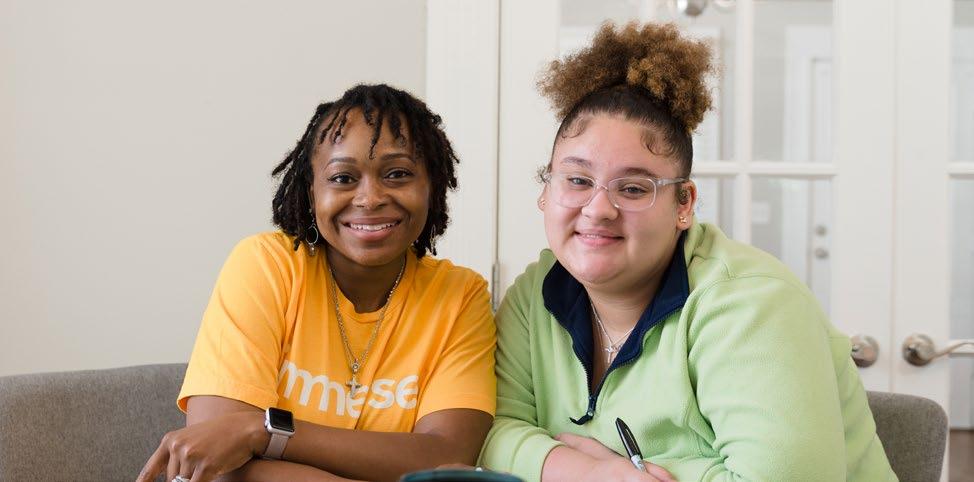
Background
The transition into adulthood can be a challenging season of life often marked by big decisions, changes in living situations, exploration of one’s identity, relationship-building, and increased expectations of independence as well as learning to navigate its consequences. This can be an even more difficult process for youth in and aging out of foster care, who are often in the midst of trauma and instability, and without the tools and relationships necessary for a successful transition. The experience of many transition-aged youth in care is similar to Sam’s.

When Sam was 4, he was found by police while he was walking along the side of a highway with “someone who used to be my older sister; she was 5,” he recalled. At the children’s home, officers “did an emergency inspection and found no food in the house. Anyone who was there was passed out from being drunk and on drugs. So they immediately arrested the adults and took all the children out of the home.”
During the next two years, Sam was placed in 13 foster homes. At 6, he was adopted into a family where he suffered psychological and physical abuse. Eventually he wound up in juvenile detention; after he got out, he went straight into a Qualified Residential Treatment Program.
It is tempting when reading Sam’s story to imagine his experience is singular or the kind that only happens to a few teens each year. However, Sam’s journey is the reality for many teens.
to re AD M ore o F s AM’ s storY, see PAG e 20
In Arkansas alone, 355 youth 18+ are enrolled in extended foster care and roughly 200 youth age out of the system each year.
At the national level, the number of transitionaged youth explodes into the thousands.

National Outcomes of Transition-Aged Youth
At the state and national levels, young people who have been in foster care—especially those who age out—experience significantly poorer outcomes than their non-system peers in areas including mental and physical health, permanent connections, education, employment, housing stability, and rates of teen or unplanned pregnancy and incarceration.
At a glance:
Youth in foster care face significant mental health challenges—Up to 80% of youth in foster care experience significant mental health issues, compared to approximately 20% of the general population (National Conference of State Legislatures, 2019;Polihronakis, 2008).
Transition-aged youth experience lower levels of educational and employment success— Foster care often takes a toll on the educational experience of youth in the system. High-school dropout rates are three times higher for foster youth than other youth in low-income living situations (Courtney et al, 2011). Additionally, several studies across multiple states have shown that only 2-4% of foster youth complete a fouryear college degree (Okpych et al, 2021; Watt et al, 2019; Courtney et al, 2011). Youth who exit care often struggle to maintain consistent employment and income, leaving little room for career growth and advancement. By 21, only 55% of youth with foster care experience reported being employed full or part time (Annie E. Casey Foundation, 2023), compared to 64% of their non-system experienced peers.
Youth aging out of foster care often face homelessness— Statistics indicate one in four youth who exit foster care at 18 will experience one episode of homelessness by the time they turn 21 (Annie E. Casey Foundation, 2023), and roughly one-third of young adults experiencing homelessness in the United States have a history with the foster care system (Dworsky,2019).
Transition-aged youth experience high levels of isolation— Very few transitionaged youth experience consistent relationships with healthy, unpaid adults. In a 2021 study, only 13% of emancipated youth (youth who aged out of care) reported receiving mentorship while residing in care (Annie E. Casey Foundation,2021).
Youth in and around foster care often overlap with the judicial system— Nationally, for youth who move to five or more placements during their time in care, there is a 90% chance they will become involved with the juvenile justice system at one point in time (Annie E. Casey Foundation, 2023).

Transition-Aged Youth in Arkansas
When a teen in foster care turns 14, they are assigned a Transitional Youth Services (TYS) Coordinator with the goal of preparing them for a successful transition to adulthood and connecting them with eligible resources. A young person enrolled in foster care on their 18th birthday can exit foster care, or they can enroll in Arkansas’s extended foster care system at any point until they turn 21.
To remain in extended foster care, youth must meet certain work or educational requirements. Placement options include enrollment in a Supervised Independent Living (SIL) program— which offers housing, case management, and other social services—or living independently and identifying a community-based sponsor (either a family member or a support person they know, such as a former foster parent).
If youth are unable to identify a support person, their DCFS caseworker will help identify a community-based sponsor for them. Some youth may qualify for placement with a Developmental Disability Services provider. A young person’s sponsor is responsible for providing some level of relational support, as well as receiving and distributing the extended foster care financial stipends to them each month.
In FY 2024, more than 2,000 transition-aged youth were in need of TYS program services at some point2, making up 34% of the Arkansas foster care population—a rate considerably higher than the national rate of 24%. Transitionaged youth also make up a disproportionately large number of those waiting to be adopted, with 44% of children and teens available for adoption being ages 14+. This is particularly troublesome, because youth in Arkansas who enter foster care as teenagers have an 84% chance of not being adopted—which means they age out of foster care at 18. For these youth, any skills related to adulthood and independent living come solely from their time in foster care, through DCFS placement providers and TYS program supports.
Due to lack of placements, older children and teens in Arkansas are more likely to be placed in group settings such as group homes, residential treatment facilities, shelters, or juvenile detention centers across the state instead of in foster homes. As children age in the foster care system, the number of placements available to them decreases; behavioral issues resulting from trauma persist, and many foster parents are unable to take in teenagers.

Foster youth are falling behind academically— In Arkansas, the high school graduation rate for foster youth is 24% lower than that of non-foster youth. With children and teenagers in care moving on average at least twice a year, every transition and placement (whether out of district or county) results in lost credits, fluctuating academic services, lack of relationships and added learning struggles. During source interviews, one person mentioned that some Arkansas school districts offer few services for those with learning disabilities or unique situations like foster care; many districts are quick to encourage a move to “home-bound” learning if a case appears difficult. With the level of autonomy that school districts are given, there is little continuity of support across learning environments. Learning challenges, behavior struggles and the number of times a young person moves while living in care impact whether they will graduate on time, if at all. For those who earn their diploma or GED, the chances of attending (and completing) a two- or four-year program are low. Even with extended foster care stipends (ETV funds), many young adults must work full time to cover all living expenses; keeping a full-time job often comes at the cost of staying in school.
Arkansas foster youth lack placement stability and relational connection— With each new placement, there is a consistent upending that teens must adapt to, limiting their opportunities to settle, build a sense of home, and make healthy connections with foster families and/or peers. Inconsistency of placements can diminish a youth’s sense of felt safety and cause past traumas and/or behavioral struggles to surface. These reactions often lead to additional placement disruptions and force young people to re-enter the moving and settling cycle, creating a negative feedback loop that is carried into adulthood.
Teens move around the system at a pace unconducive to developing attachments, succeeding in school, or gaining valuable work experience. Children and teens in foster care move placements on average at least once every six months in Arkansas—well above the national average of roughly every nine months2 The number of moves a young person makes also impacts the quality of relationships built with others and diminishes their skill set for forming and maintaining connections; there is little space for “practicing” connection-building and little time for developing secure, healthy attachments that dip below the surface.
2 Arkansas Department of Human Services, Division of Children and Family Services. (2024). Annual report card: State fiscal year 2024 (July 1, 2023 –June 30, 2024).

Teens and young adults lack employment stability and life-skills development— Between moves in residential facilities or QRTPs, young people who do not reside in foster homes often do not have a climate for practicing life skills they would use in a typical day-to-day environment related to hygiene/cleanliness, financial literacy, employment, cooking, etc. There is also less opportunity for obtaining and maintaining employment between inconsistent placements, lack of transportation, and a lack of skills for performing well in a job. In source interviews, one interviewee (a young adult in foster care), stated that any progress she made in her schooling, job attainment, or financial stability was all on her own. In her group home, she did not have daily interactions that allowed her to practice those types of skills or learn what it “means to be an adult.” Though DCFS and other agencies offer transitional living classes to teens in care as an attempt to alleviate these struggles, studies show that youth learn best and flourish in relationships with others.
To help mitigate these obstacles, transitionaged youth can enroll in extended foster care or apply specifically for the Supervised Independent Living program. Roughly 355 youth ages 18+ were enrolled in extended foster care (ages 18-21) as of December 2024, with 38 youth enrolled in a Supervised Independent Living (SIL) program and 312 youth living independently while connected with a sponsor or living in a Developmental Disability Services placement.
Even though hundreds of Arkansas youth participated in extended foster care during FY 2024, 177 aged out of the system at 18; 32% of the 56 contracted SIL beds throughout the state—only enough beds for one out of six youth in extended foster care—laid vacant as of December 2024.
To remain in extended foster care, youth must meet certain work or educational requirements. Placement options include enrollment in a Supervised Independent Living program—which offers housing, case management, and other social services—or living independently and identifying a community-based sponsor (either a family member or a support person they know, such as a former foster parent). If youth are unable to identify a support person, their DCFS caseworker will help identify a communitybased sponsor for them. Some youth may qualify for placement with a Developmental Disability Services provider. A young person’s sponsor is responsible for providing some level of relational support, as well as receiving and distributing the extended foster care financial stipends to them each month.

Northwest Arkansas Needs Assessment
Transition-aged youth are overrepresented and underserved in Northwest Arkansas’s foster and social support systems. This creates bleak prospects for teens, young adults, and families in and around the foster care system. Without intervention, the problems faced by teens and families are likely to repeat systemically for generations to come.
How many youth are in foster care in Northwest Arkansas? Arkansas is broken up into ten distinct areas served by the state’s foster care system, Division of Children and Family Services (DFCS). Area 1 covers a four-county area in Northwest Arkansas including Benton, Carroll, Washington, and Madisoncounties.
In FY 2024, 289 youth ages 12 or older were served in Area 1, making up more than a third (39%) of the total number of youth served in the region3 . The highest concentrations of these youth were located in Washington County (55%) and Benton County (32%). Additionally, 97% of Hispanic children and teens in foster
care are located in these two counties, alongside higher rates of Marshelles children and teens. Provisionof culturallycompetent care andlanguageaccessible services for TAY is critical in these areas.
The region possesses higher caseloads in comparison to other parts of the state3, with the average number of children and teens per caseworker being:
The region possesses higher caseloads in comparison to other parts of the state, with the average caseload sizes being: State Average: 20 children or teens per caseworker
CHILDREN AND TEENS
Teens in and around NWA’s foster care system face significant additional challenges.
Lack of placements for teens in foster care— A large percentage of 10- to 17-yearolds in foster care in Area 1 are displaced to other areas of the state due to lack of local foster homes and group homes in Northwest Arkansas. In December 2024, there were 432 youth (0-21) in foster care in Area 1 but only 189 open foster homes. Despite fictive kin efforts, there are still not enough foster homes for TAY. There is one Psychiatric Residential Treatment Facility (PRTF) and one Qualified Residential Treatment Program (QRTP) in all of the four-county Area 1. Both are primarily for youth ages 12-17. The PRTF holds 102 beds; however, roughly 75% of those beds are only for males. The QRTP holds 16 beds but is exclusively for males with a history of problematic sexual behaviors in Division of Youth Services and DCFS custody. Due to the minimal number of foster homes open to teens and the lack of group homes in the region, the likelihood is quite high that these older youth are placed outside their home county–outside of their familiar social networks, schools, and sense of stability.
Overwhelmed and under-supported adoptive families— According to source interviews, there is a wave of disrupted adoptions and divorce among adoptive families in Northwest Arkansas. In speaking with current foster and adoptive families, as well as foster serving agencies, families are struggling without accessible relational and practical support. In one interview, social service providers described increasing numbers of adoptive families surrendering their teens to the state or facilities due to an inability to navigate psychiatric and behavioral challenges.
Lack of reliable public transportation— There is limited widespread public transportation service in the region, so those without vehicles are unable to consistently work and/or commute to higher paying jobs in other areas. In nearly every interview with community agencies and members, housing
and transportation were listed as the top struggles for young adults, whether they were in the foster care system or not.
Lack of housing for young adults, including those exiting care— For the majority of youth who age out of care, the likelihood of immediately entering into unstable housing is quite high. Many end up couch surfing, returning to unhealthy family members, entering detention facilities, or living on the streets. Rapid development and growth in the region have made lack of affordable housing a looming problem in Northwest Arkansas. As of the second half of 2024, the average home in Washington County was valued at $402,322 (67.2% increase over the past five years)4 and the average home in Benton County was valued at $449,750 (69.6% increase over the past five years). Because most houses in Benton County were built after 1995, construction costs and costs of living begin there at a higher rate than in other parts of the region. For young adults aging out of foster care or with limited social networks, securing affordable housing can be an even weightier task. In interviews with local nonprofits, public schools, and a local judge, many young adults who age out of care are reported as “sleeping under bridges,” “disappearing,” or “in jail.”
The negative outcomes are even higher for young men, because there are no specific shelters or housing programs for them. Former Washington County Juvenile Judge Stacey Zimmerman mentioned multiple young adults she knew who were living under bridges because they had no place to go when they exited a local children’s shelter or juvenile detention facility. In Springdale, there are at least 26 homeless camps composed of both young people and older adults facing chronic homelessness, as well as at least 25 known homeless camps in Fayetteville.
Nonprofit agencies that previously served vulnerable young men who were aging out of foster care or experiencing homelessness are no longer operating in Northwest Arkansas. Micah’s House and Youth Bridge are two
4
examples. Local nonprofits expressed concern with the current reality, citing juvenile detention centers and jail as unfortunate future realities for many of these young men apart from intervention. Saving Grace NWA is currently the only residential program for youth ages 18+ in Area 1 who have aged out of foster care or are experiencing homelessness. The program offers transitional housing, case management, mentorship, and counseling. However, it can currently house only 11 individuals at a time, and only women ages 18-25 who are no longer in foster care are eligible. Plans to expand the number of beds are in development; however, the program will not serve young men.
Hidden poverty, often linked with increased interaction with foster and juvenile justice systems— In Arkansas, 51% of entries into foster care in 2024 were classified as due to neglect (Arkansas Division of Children and Family Services, 2024). National trends are very similar, with a growing number of neglect cases related to poverty. According to Drew Shover, chief probation officer for Benton County Juvenile System, 78% of delinquent youth in Benton County live in absolute poverty; in nine out of 10 Family in Need of Services (FINS) cases, youth are living in absolute poverty. Of the youth he works with, the average high school attainment is 10th grade. A portion of the Benton County Juvenile Detention Center, Alternative Placement Adolescent Center (APAC), serves as a shelter placement for nonviolent youth needing case management, respite from domestic violence, and education assistance. In 2023, the center served 42 youth
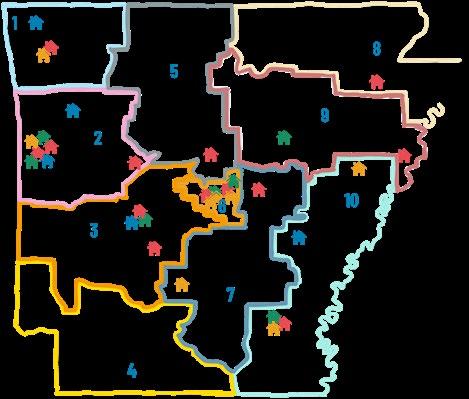
from all over Area 1. More than three out of every four youth (78%) were admitted due to issues within the home. Unfortunately, APAC is currently only offered to males, with no option for females despite an increasing population of female juveniles.
Lack of resources for teens experiencing housing instability— Of teens in care or in vulnerable family situations, a growing number are experiencing unstable housing. One local high school guidance counselor shared that she “sits on pins and needles hoping no one (18+) comes into the office asking for housing assistance because there is nowhere to send them” or that “24-hour gym memberships are often a solution to at least help a young person go somewhere warm and safe for the evening.”
Lack of support for young adults in extended foster care— Roughly 355 youth ages 18+ were enrolled in extended foster care (ages 18-21) throughout the state as of December 2024, with 38 youth enrolled in a Supervised Independent Living (SIL) Program and 312 youth either paired or waiting to be paired with a sponsor. There are 56 contracted SIL beds in Arkansas; however, there are currently no SIL providers in Area 1. This means youth in Area 1 who decided to remain in extended foster care and are in need of the increased level of support offered through SIL programs must move out of their home area in order to do so. Currently, the closest SIL program is located in Fort Smith, AR.
Arkansas Providers




Supervised Independent Living Program Provider
Qualified Residential Treatment Programs (QRTP) Psychiatric Residential Treatment Facilities (PRTF) Emergency Children’s Shelters
In a nutshell, what is the real problem faced by transition-aged
youth in Northwest Arkansas?
Transition-aged youth, including teens and young adults in and around the foster care system, have in many ways fallen through the cracks. Oftentimes off the radar, these young people are overrepresented in the foster care system, juvenile justice system, homeless population, and mental health acute treatment centers. Yet, they remain under-resourced. There are few relational, age-appropriate proactive supports in place to allow young people the opportunity to enter adulthood resilient and ready for life. Simply put, many have not been given a chance to thrive.
What is at stake?
Without support, these young people will become the future “heavy users” of Northwest Arkansas’s social services through experiences of poverty, homelessness, mental health crises, unplanned pregnancy, and interactions with law enforcement. On average, former foster children require $300,000.00 in public assistance during their lifetimes5. That means the 200 youth who age out of foster care in Arkansas each year will cost taxpayers $60 million every year. Former foster children often experience broken relationships in early adulthood as unplanned pregnancies, domestic violence and other issues create a second and third generation of children in foster care. These experiences will most likely trickle down into the next generations, as children are then raised in similar circumstances.
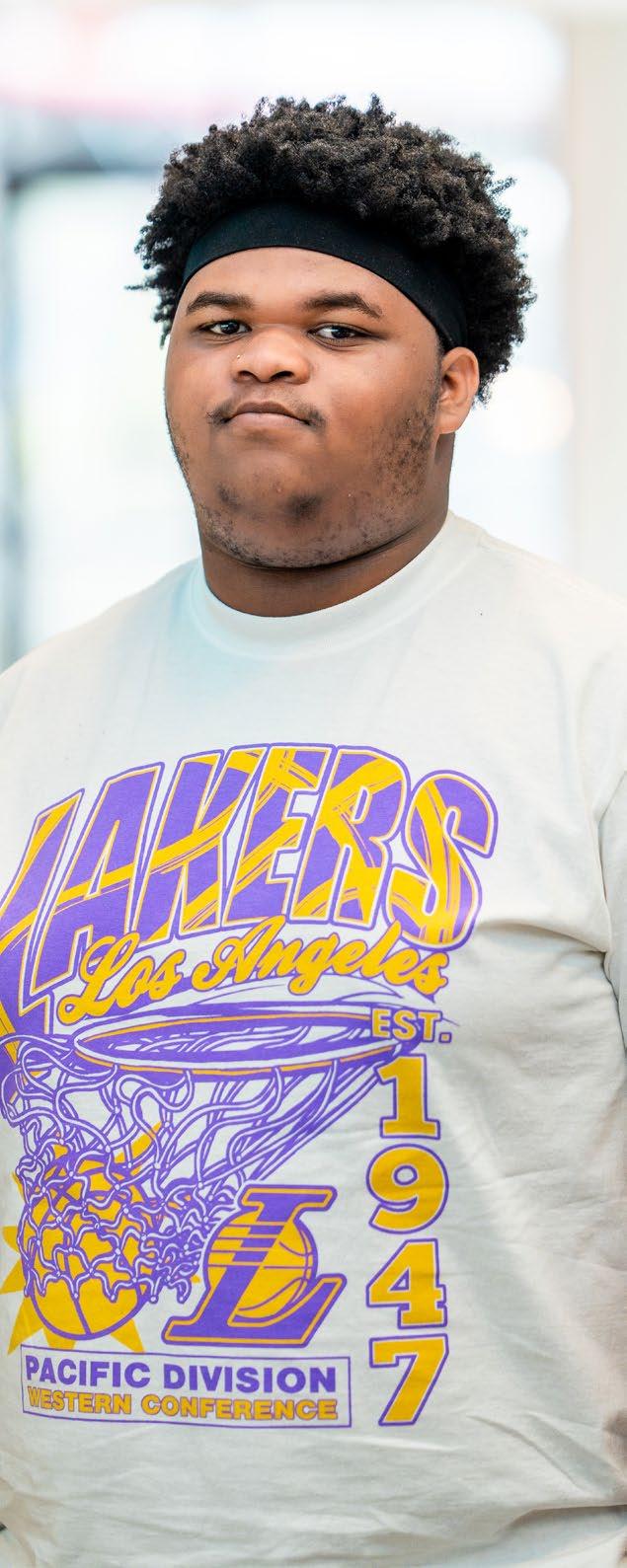
Current Efforts
Northwest Arkansas is a region known for innovation, opportunity, and a saturation of flourishing corporations and industries. There is also a palpable culture of commitment to ensuring communities are healthy and thriving. This was clear throughout each source interview—from public school counselors, those serving in the juvenile justice system, churches, foster families, economic development entities, and nonprofits.
Incredible work is being done by dedicated providers and community members.
Those in Northwest Arkansas serving transitionaged youth through foster care, nonprofits, public schools, and the juvenile justice system are providing exceptional care, often going above and beyond the stated scope of work for their roles and agency; they are piloting creative solutions to ensure youth needs are met. Source interviews revealed examples of this culture of dedication and ingenuity:
• A Springdale public school counselor hands out gym memberships to youth in need of shelter as a resource to keep them safe.
• The CALL in Northwest Arkansas recruits and trains foster families, then continues to support them through therapy and inkind financial assistance even after their adoptions are finalized.
• The Benton County Juvenile Detention Center expanded its programming to include re-entry services and a shelter because they knew youth needed it.
• CASA of Northwest Arkansas provides volunteers to serve as court-appointed special advocates for youth in foster care who have been neglected or abused. The organization and its volunteers often continue to support youth relationally and financially, even once they have exited care because youth still need the support.
Other community leaders in the youth and young adult space include Northwest Arkansas Children’s Shelter (NWACS) and Saving Grace. Northwest Arkansas Children’s Shelter is a strong collaborator and fierce advocate for quality care for children and youth in need. With more than 30 years of experience serving children and teens up to age 17, they are dedicated to finding ways to increase safety and opportunities for young people as they enter adulthood. Saving Grace, one of the area’s only transitional housing resources for young women ages 18-25 no longer tied to the foster care system, is working to expand their housing and program capacity to serve more young women.
Refer to page 24 for a list of Northwest Arkansas source interviews, including transition-aged youth service providers.
1Identified Gaps
Despite resources in the region providing foster care licensing and training, sponsorship, shelter for minors, and counseling, there are no wraparound supportive services for teens in foster care or transitional programming for young adults 18+ in extended foster care.
Where is the opportunity for impact?
Age appropriate, safe housing for young adults 18+, paired with wraparound support— Housing (including immediate shelter, transitional housing, and permanent affordable housing) was a consistent gap identified throughout source interviews of nonprofits, public schools, and juvenile justice representatives. An interview with a local children’s shelter revealed there are few to no housing options for young people once they turn 18. Research of current resources uncovered no SIL or transitional programs for youth who chose to stay in extended foster care in Area 1, no shelters specifically designed for 18- to 24-year-olds, and considerable challenges facing young adults seeking affordable permanent housing on their own.
In addition to housing, key programming gaps include deep case management, mentorship, and life skill development. Age-appropriate, safe housing for young adults, paired with wraparound support, would fill a staggering void in current resources—offering young people the opportunity to experience the stability and support they need in order to thrive.
“(Immerse) would be pioneers with the work that you do. No one is doing this type of work.”
–D re W s H o V er , B enton C ount Y J u V en IL e s Y ste M’ s CHI e F P ro BAt I on su P er VI sor
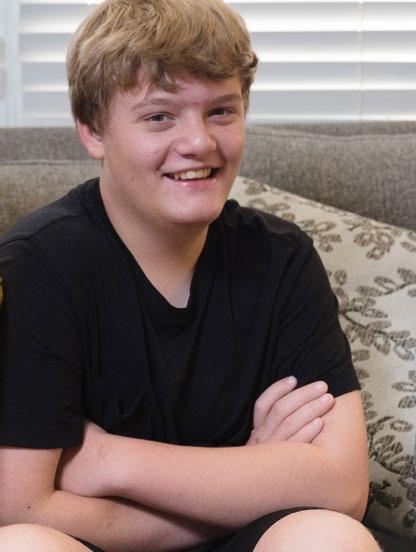
Wraparound supportive services for foster and adoptive teens and their families— Navigating teenage years in foster care can feel like a wilderness experience, both for teens and their foster and adoptive families. Across multiple conversations with agencies, nonprofits, and foster parents, many said,
“We just need more people. If only there was someone to help a young person navigate all of these challenges such as life skills, housing, and employment.”
Lack of foster placements for teens, disrupted adoptions, and waves of divorces experienced by foster and adoptive families were themes that emerged in many interviews with local nonprofits, behavioral health providers, and foster and adoptive families. There is a clear need for increased support for foster and adoptive teens and their families.

Consistent, community-based relationships for teens and young adults— Throughout source interviews, the need for consistent, unconditional relationships with mentors is evident. Teens and young adults in care are often disconnected from the community and lack long-term, positive relationships with healthy adults. Focused mentor recruitment, specialized trauma training, and ongoing wraparound support for mentors and sponsors for teens and young adults could provide lasting relational support that extends well beyond a young person’s time in foster care.
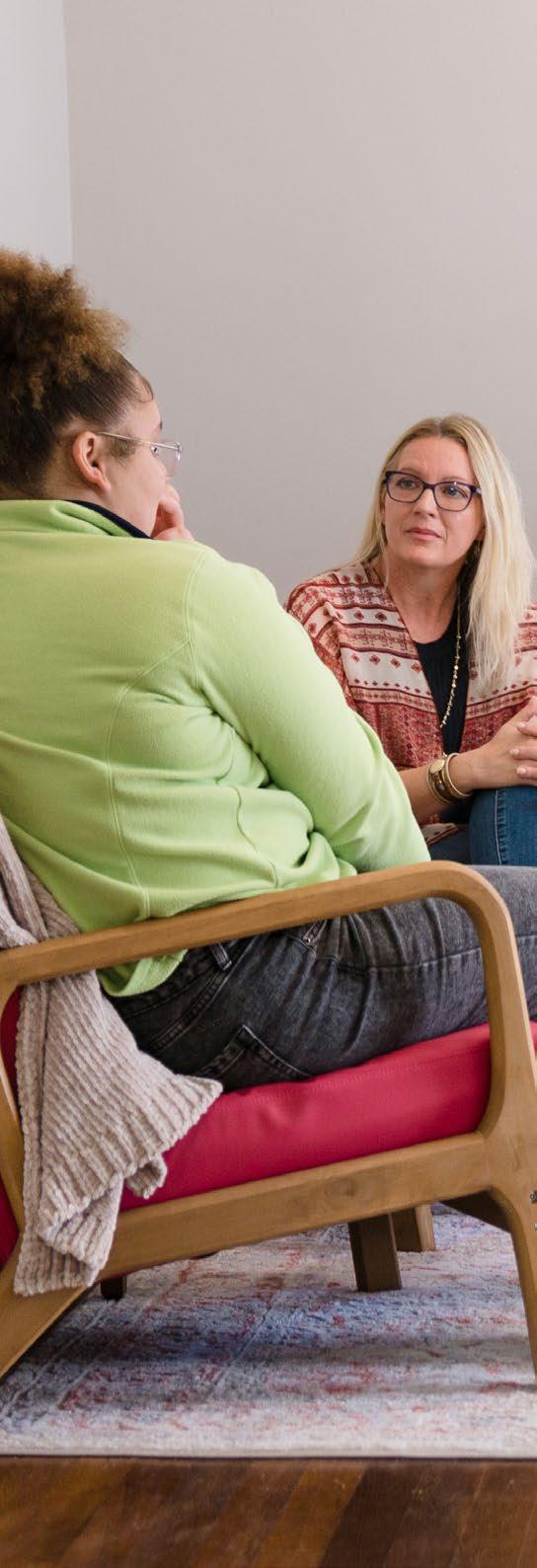
4
Expansive mental health treatment options— Within Area 1, there are multiple treatment programs targeting substance use recovery and one agency with a DCFS contract to provide Psychiatric Residential Treatment (PRTF) and Qualified Residential Treatment (QRTP); however, these are largely for males and only for those with a history of problematic sexual behaviors. Therefore, many transitionaged youth, particularly females, are moved out of their home county to receive adequate mental health services.
5
Additional reentry and shelter placements within the juvenile justice system— Due to the increasing rate of young women entering the juvenile justice system, there is a great need for additional placements. The existing re-entry programs and shelters are focused toward young men as they have had higher rates of system involvement in previous years. If young women do not receive adequate placement services or re-entry care, there is a higher chance of reoffending and/or higher vulnerability to trafficking in the future.
Expansive transportation services— There are limited public transportation services throughout the Northwest Arkansas region, despite its widespread growth geographically. The only public transportation available are the Razorback Transit (Fayetteville) and Ozark Regional Transit (Fayetteville, Springdale, Rogers, Bentonville), which both offer limited routes and schedules. For young adults who lack their own transportation, traveling for work outside their local neighborhood becomes a challenge and decreases the likelihood of financial stability.
Deeper support for low-income families— There is a strong connection between families experiencing poverty and interactions with law enforcement, the juvenile justice system, and the foster care system. In Benton County, 78% of “delinquent” youth live below the poverty line. For the “delinquent” population, 70% of families live in absolute poverty and 90% of open Family in Need of Services (FINS) cases are living at the absolute poverty level6 Without case management and wraparound supports, the likelihood of parents and children interacting with the juvenile or foster systems increases. This creates negative impacts for future generations.
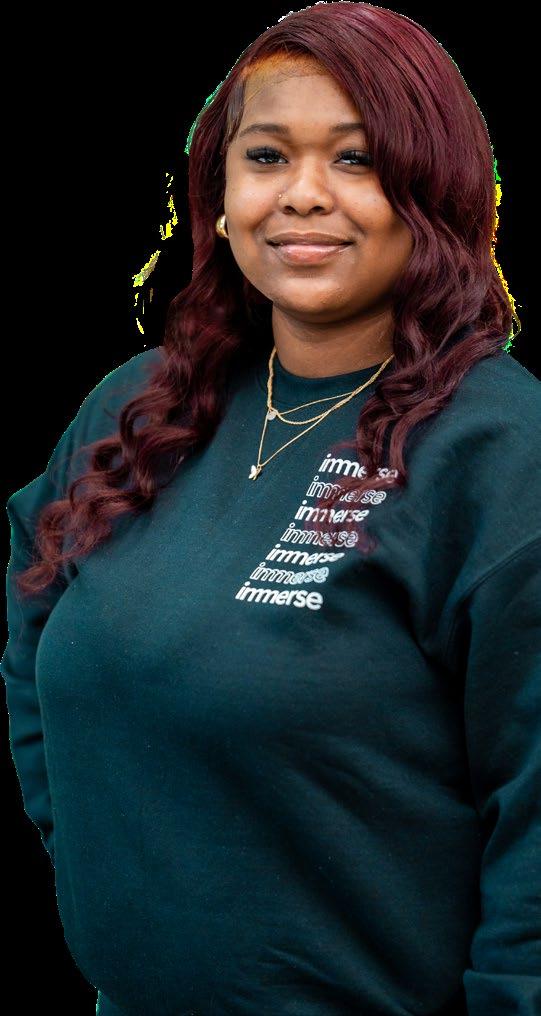
Conclusion
Great opportunity exists for Northwest Arkansas to continue leading with innovation and making this region a place where teens, young adults, and families in and around the foster care system can truly thrive. We are encouraged by the drive and dedication found in Northwest Arkansas and are optimistic about the future social and economic landscape there for transition-aged youth.
In response to the pressing needs of Northwest Arkansas transition-aged youth and an invitation from DCFS, Immerse Arkansas is thrilled to collaborate with other local providers and expand its impact into Northwest Arkansas in 2026.
Looking Ahead
Immerse has developed a plan to launch into the region to serve youth from crisis in Benton and Washington counties and the surrounding area. The approach will be staggered depending on funding, staff recruitment, and program implementation. Additionally, Immerse will continue assessment work to better understand the local needs and best practices for supporting Hispanic and Marshallese youth in these areas.

Goal 1: Equip youth for adulthood through the LifeBASE Transitional Program
PHASE A (2026):
Provide coaching and wraparound supports for foster and adopted teens ages 14-18 and their families.
Through coaching, trauma therapy, relationship building and employment and educational support for teens who are in foster care or have been adopted, Immerse will address past trauma and equip teens and their families for the teen’s transition into adulthood. Immerse plans to gradually increase staffing for a capacity to serve up to 60 youth and their foster and adoptive families at any given time between Benton and Washington counties.
PHASE B:
Provide coaching, wraparound supports and housing for young adults ages 18-24.
From housing and coaching to mentoring and life skills training, Immerse will provide young adults ages 18-24 with the tools, skills and relationships they need to enter adulthood resilient and ready for life. Immerse plans to serve roughly 15 youth at any given time through this program.
“Immerse Arkansas has led in providing transition-aged support to youth in Central Arkansas for 15 years. DCFS invited and encouraged Immerse to expand their work to serve young people in Northwest Arkansas. There is a deep need for their work in this area of the state to keep young people connected to their communities. This expansion will continue Immerse’s critical, proven support to foster and adoptive teens and young adults and their families who need it.”
Goal 2: Protect young adults through a youth shelter
Provide trauma-informed emergency shelter with wraparound supports for youth ages 18-24.
The Station, Arkansas’ first shelter for young adults, opened in Little Rock in September 2024. Immerse will adapt our proven programming and model used to serve youth experiencing homelessness in Little Rock to serve youth from crisis in Northwest Arkansas. Once built, Immerse plans to serve roughly 15 youth at any given time through this shelter.
The needs and challenges faced by transitionaged youth in Northwest Arkansas are complex; addressing them effectively is a job too great for any one agency to handle alone. Strategic collaboration is necessary across every area of civic life—from elected officials, teachers, clergy, volunteers, business people and the community at large.
At Immerse, our goal is to build a broad, reliable pathway to healing for every youth from crisis in Arkansas. Together, we can make sure they have the support and care they need to enter adulthood resilient and ready for life, equipped with the tools they need to achieve their goals and dreams.
Washington and Benton counties know about achieving goals and dreams with a strong community spirit. Fayetteville is home to

Arkansas’ first bank, first public school, first state chartered public school district and first degree-granting college. In Bentonville, a five and dime on the town square became the largest retailer in the world.
This corner of our state can be an undisputed leader in holistic, community-based support for transition-aged youth.
We look forward to partnering with those working in the region to disrupt cycles of trauma and poverty. And we’re excited for youth from crisis to see that overcoming starts in Northwest Arkansas.
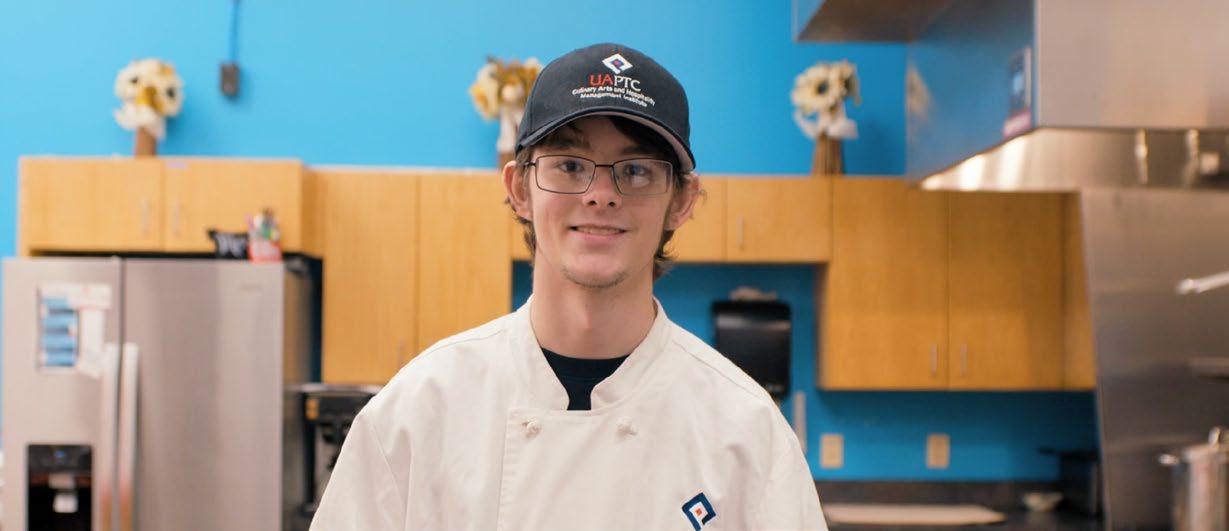
Sam’s Story
Like many other youth from crisis, 19-year-old Sam endured brutally harsh experiences as a small child. He didn’t choose these traumatic circumstances, but he’s choosing not to be defined by them.
When Sam was 4, he was found by police while he was walking along the side of a highway with “someone who used to be my older sister; she was 5,” he recalled. At the children’s home, officers “did an emergency inspection and found no food in the house. Anyone who was there was passed out from being drunk and on drugs. So they immediately arrested the adults and took all the children out of the home.”
During the next two years, Sam was placedin13 foster homes. At 6, he was adopted into a family where he suffered psychological and physical abuse. Eventually he wound up injuvenile detention; after he got out, he went straight into a Qualified Residential Treatment Program.
In detention, he discovered a passion for cooking. He began thinking about his future and decided to enroll in the culinary program at Pulaski Tech in Little Rock when he turned 18. Knowing he would need a place tolive
while he attended college, Sam reached out to the Arkansas Department of Human Services forhelp.
And that’s how he found LifeBASE, a transitional program that equips youth ages 1824 for healthy adulthood.
“I came to Immerse for housing, but they’ve helped me have transportation and get an apartment,” said Sam. “I have a great therapist provided by Immerse who’s helping me work through anxiety and the reasons in my past that have been causing it, and helping me with PTSD I’ve had from my past.”
“In my seven months at Immerse, I’ve overcome challenges with school, not really understanding the dynamics of college or what I’m supposed to be doing at any given time,” he added. “I’ve been gaining physical strength, as well as emotional and psychological strengths. I’m just trying to better myself as much as Ican.”
Soon after Sam was accepted, he gravitated toward rock climbing. He received belay certification and became a member at the Little Rock Climbing Center.
“In LifeBASE, we’re looking for an increase in BASE independence,” said Justin Kirkes, Immerse’s recreation manager. “The fact that Sam went from us taking him to the Climbing Center to going on his own—that’s transformation!”
“Climbing requires a community,” Justin added. “So Sam, my oldest son and I formed a team and entered a climbing league. We called ourselves ‘The Overcomers.’ We went every Tuesday for four weeks and finished in sixth place at the end.”
Sam continues to thrive in LifeBASE. He trained for and ran in the 2025 Little Rock Marathon 5K and now counts backpacking and hiking among his favorite activities.
“We took him along with five other youth on our first overnight backpacking trip in December,” Justin recalled. “Sam was so excited about it that he wanted to do a solo experience. This is the kind of increase in BASE independence we’re looking for.”
Sam is continuing therapy; he looks forward to traveling someday and making new friends. And he’s taking ownership of his growth in life.
“I’m still overcoming my lack of self worth— constantly thinking I’m not good enough or strong enough, or I’m not progressing and getting better at things fast enough,” Sam said. “Because, turns out, I’m doing better than enough.”
This is what LifeBASE does for youth: It offers them the tools, skills and supportive relationships they need to grow, and to define themselves differently—to experience life as overcomers.
From climbing walls to culinary school, Sam is thriving. And for every youth who steps into LifeBASE…
OVERCOMING STARTS HERE!
Watch more of Sam’s story

“At Immerse, I’ve learned I’m more than my past,” said Sam. “I’m not the scared 4-year-old who’s walking down the highway. I’m a 19-yearold who’s overcome a lot of challenges and who’s gotten further in life than anyone would’ve imagined.”

NWA Resource Grid
Northwest Arkansas Source Interviews
Thank you to the following individuals who generously offered their time and insights as part of this assessment:
Nonprofits Serving Transition Aged Youth in Foster Care
• CASA of Northwest Arkansas
• The Call of Northwest Arkansas
• Youth Villages
• Project Zero
Nonprofits Serving Non-System Teens
• Teen Action Support Center (TASC)
Nonprofits Serving Youth who have Exited Foster Care or are Experiencing Homelessness
• Saving Grace NWA
Nonprofits Serving Individuals Experiencing Homelessness
• 7Hills Homeless Center (adults)
• New Beginnings (adults)
• Northwest Arkansas Children’s Shelter (children)
• Northwest Arkansas Continuum of Care
Nonprofits Serving Victims of Human Trafficking
• Hub of Hope
Other Nonprofits
• Circles NWA
• Havenwood
• Aiding Survivors of Trafficking and Child Abuse (AID)
Behavioral Health
• Yellow Rock Behavioral Health (formerly Piney Ridge)
Churches
• Genesis Church
• Fellowship Fayetteville
• New Heights Church
• Cross Church
Foundations
• Excellerate Foundation
• Arkansas Community Foundation
• Walton Family Foundation
Law Enforcement
• Drew Shover, Benton County Juvenile System’s Chief Probation Supervisor
• Fayetteville Police Department
• Springdale Police Department
Local Government and Legal System
• State Representative Nicole Clowney
• Former Juvenile Judge Stacey Zimmerman
• Dean Allen, City of Springdale
• City of Fayetteville Community Services
• City of Fayetteville Parks and Recreation
• Mayor Rawn’s Chief of Staff Susan Norton
• Crystal Jones, DCFS Transitional Youth Services Manager
• Tiffany Wright, Arkansas DCFS Director
• Natosha Lowrey, Area 1 DCFS Director
• Isabella Schuber, DCFS Area 1 TYS Coordinato
• Arkansas TYS Coordinators
• Division of Youth Services
• Kimberly Key-Bell, Division of Youth Services
Economic Development
• Casey Kleinhenz, Community Development NWA
• Central States Manufacturing
• Marshall Saviers
Family Resources
• Heather Edwards, 100 Families Initiative of Sebastian CountyHeather Edwards
• Restore Hope
Youth and Families
• SIL Youth in Little Rock
• Youth Focus Group via CASA NWA
• Youth and Sponsor Focus Group via The CALL
Others
• Mischa Martin, Former DCFS Director
• Christin Harper, Arkansas Advocates for Children and Families
• Keesa Smith, Arkansas Advocates for Children and Families
• Dan Miller, University of Arkansas’ Bumpers College
• Har-Ber High School Guidance Counselors and School Administrators
Immerse Overview
The Problem
Abuse, neglect and trauma have wreaked havoc on the relationships, identity and resilience of youth from crisis, making their transition to adulthood extremely challenging.
Continuum of Support
Immerse provides a continuum of support to protect, inspire, equip and empower youth in their journeys toward healing and healthy adulthood.
The Solution
We believe when we surround youth from crisis with unconditional relationships, tools that anticipate their needs and dreams and a vision for their restored future, we create a climate that leads to healing, growth and transformation.
Alumni
LifeBAse transitional Program
the oC Youth Center
the station Youth shelter
We want to disrupt the cycles of trauma and poverty that afflict teens and young adults connected to the foster care system. We see a future where growing up in foster and adoptive care in Arkansas isn’t solely a devastatingsetback, but also a starting point for healing. A place where youth have a reliable pathway to get the support and structures they need to overcome crisis and enter adulthood resilient and ready for life.
We’re building that pathway. And we’re expanding our reach — working to ensure that youth across the state have access to specialized trauma care, safe and stable housing, an education for a better earning potential, and a caring mentor walking with them as they exit state and adoptive care and enter adulthood.
Empower graduates to give back to youth coming behind them
Equip youth through a transitional program in houses, apartments or families
Inspire youth to achieve big goals, connect them with tools and a community of support
Protect youth experiencing homelessness through a low-barrier, safe place to sleep and get help
FUTURE LOCATION
Northwest Arkansas
CURRENT LOCATIONS
Little Rock & Conway
We’re investing in the future of our youth, in the future of our state, in a future immersed in hope.
Our Leaders




Eric Gilmore, MSW Founder & CEO eric@immersearkansas.org
Justin Sanders, LCSW Chief Financial Officer jsanders@immersearkansas.org
Sydney Foster, LMSW Director of Grants & Impact sydney@immersearkansas.org
Desirae McBride Little Rock Site Leader dmcbride@immersearkansas.org




Our Board
TANNER MEZEL Board President Strategy Consultant
BO BOSCHETTI Board Treasurer Director of Loan Operations, Simmons Bank
CAROL SPENST Board Secretary Owner, Chick-Fil-A
JIMMY ALESSI Co-Owner, Alessi Keyes Construction
ROBERT COOK Bishop, St. Andrew’s Anglican Church
Terria Diggins, MBA Chief Program Officer tdiggins@immersearkansas.org
Layne Moss, LMSW Director of Strategic Initiatives lmoss@immersearkansas.org
Ashley Hooten Director of Generosity ahooten@immersearkansas.org
Micah Mahan Conway Site Leader mmahan@immersearkansas.org
HANNA MANNING Director of Academics, Conway Christian School
ROBBI RIGGS Attorney, Mitchell, Williams, Selig, Gates & Woodyard, P.L.L.C.
CHARLIE SIMPSON, LPC, LMFT Owner & Therapist, Arkansas Relationship Counseling
DIANE TRACY Child Advocate
STEPHANIE WILCOX Child Advocate
